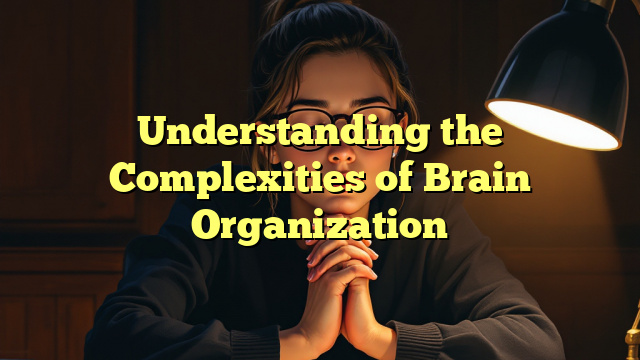The human brain is an incredibly complex organ that controls all of our thoughts, behaviors, and emotions. Understanding the organization of the brain is crucial for unlocking the mysteries of how it functions and how it can go wrong.
Brain Structure
The brain is divided into several main regions, each with its own specific functions. The cerebral cortex, which is the outer layer of the brain, is responsible for higher-level thinking, such as decision-making, problem-solving, and creativity. The cerebellum is located at the back of the brain and controls coordination and balance. The brain stem regulates basic functions such as breathing and heart rate. The limbic system is involved in emotions and memory.
Brain Networks
Within the brain, there are intricate networks of neurons that communicate with each other to process information and generate thoughts and actions. These networks can be divided into specific pathways that are responsible for different functions, such as the visual pathway or the motor pathway.
Neuroscientists have also identified large-scale networks that connect different regions of the brain and are involved in complex cognitive processes. For example, the default mode network is active when the brain is at rest and is thought to be involved in self-referential thinking and introspection. The salience network helps us focus our attention on important information in our environment.
Brain Plasticity
One of the most fascinating aspects of the brain is its ability to change and adapt in response to experience. This phenomenon, known as brain plasticity, allows us to learn new skills, recover from injury, and even rewire our brains in response to environmental factors.
For example, studies have shown that learning a new language can increase the size of certain areas of the brain that are involved in language processing. Similarly, individuals who lose their sight can develop enhanced abilities in other senses, such as hearing or touch, as their brains reorganize to compensate for the loss of vision.
Conclusion
Understanding the complexities of brain organization is essential for advancing our knowledge of how the brain works and how we can prevent and treat neurological disorders. By studying the structure, networks, and plasticity of the brain, scientists are gaining new insights into the mechanisms that underlie cognition, emotion, and behavior. As research in this field continues to evolve, we can expect to unravel even more mysteries of the brain and develop new therapies to improve brain health.
FAQs
What is the default mode network?
The default mode network is a large-scale brain network that is active when the brain is at rest and is thought to be involved in self-referential thinking and introspection.
What is brain plasticity?
Brain plasticity refers to the brain's ability to change and adapt in response to experience, allowing us to learn new skills, recover from injury, and rewire our brains in response to environmental factors.
How does the brain process information?
The brain processes information through networks of neurons that communicate with each other to generate thoughts and actions. These networks can be divided into specific pathways that are responsible for different functions.
Unlock Your Mental Potential




